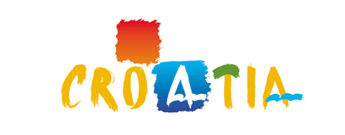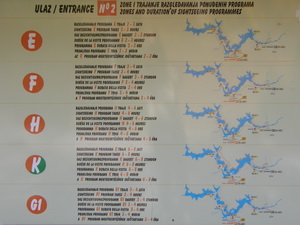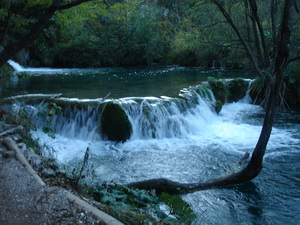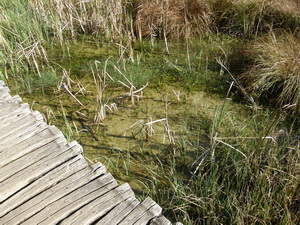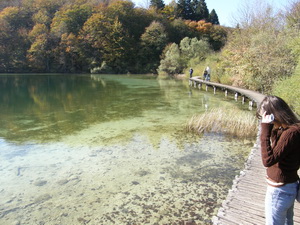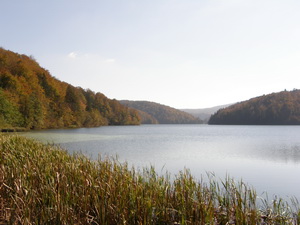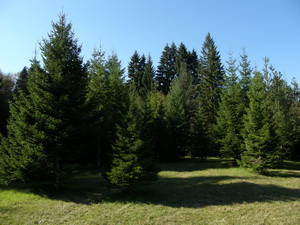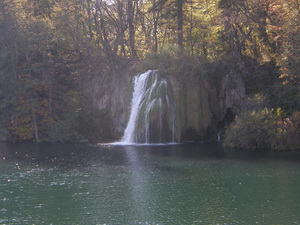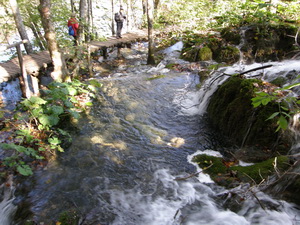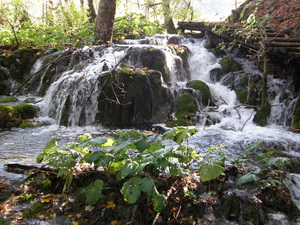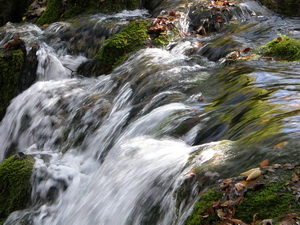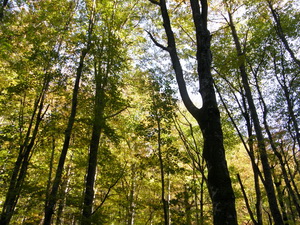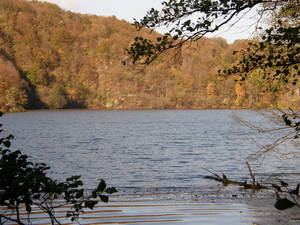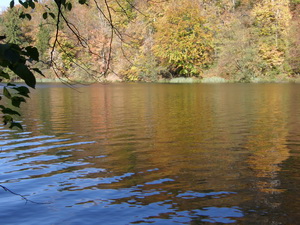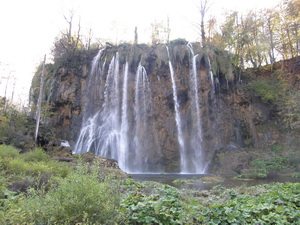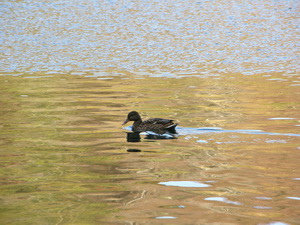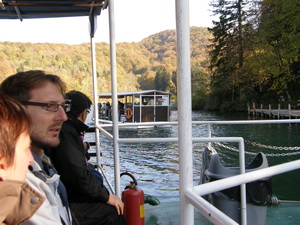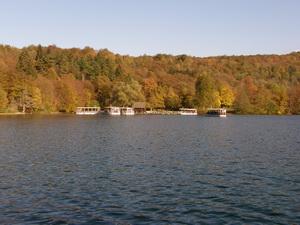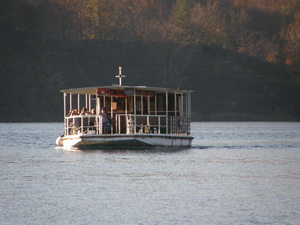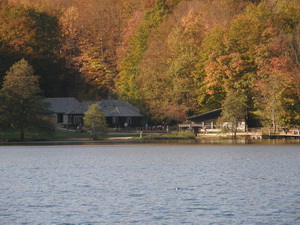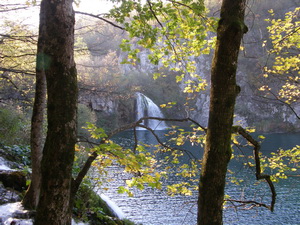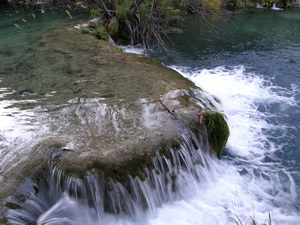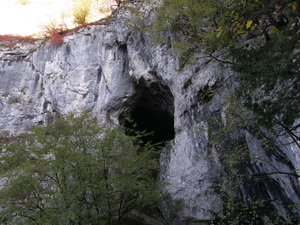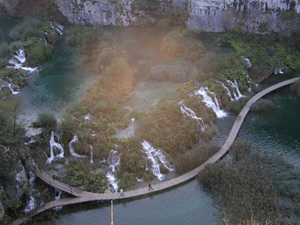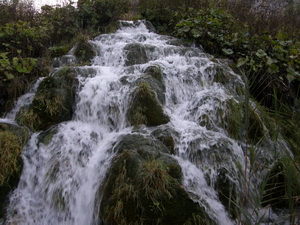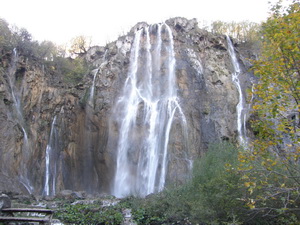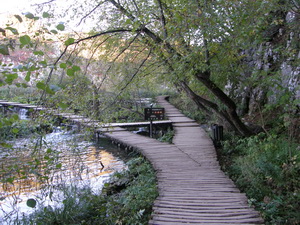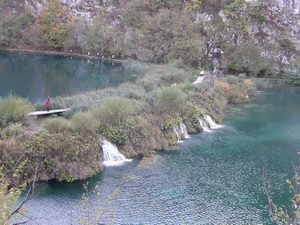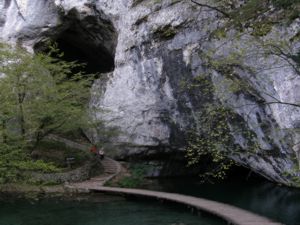Croatia Tourist Information |
Croatia Top Destinations |
Croatia Top Attractions |
Croatia Top Beaches |
Croatia Top Party Destinations |
Croatia National Park - Plitvice Lakes
PLITVICE LAKES - FOUNDATION AND LOCATION
National park Plitvice Lakes was founded in 1949. Total size of national parks Plitvice Lakes is 29685,15 ha. Plitvice Lakes are consisted of 16 lakes which are world known, but the park is also famous by its rish animal and plant life. It is Croatian largest and oldest national park.
In 1979. Plitvice Lakes are listed on the List of World's Heritage (UNESCO). National park Plitvice Lakes is located in Karlovac's (9,3%) and Lika-Senj district (90,7%). Lakes are located on source of river Korana. Plitvice Lakes are located in south-east Europe, 140 km south of Zagreb and 220 km north from Split.
PLITVICE LAKES - CLIMATE
Climate in area of National Park Plitvice Lakes is transitional coastal and continental. Winters are long and strong. Summers are sunny and pleasant. Average year temperature is around 15oC. Wind is in summer time mostly south-west and in winter time north-east. Autumn is short and in November proceeds to winter. Snow is present mostly in December, January and February.
PLITVICE LAKES - LAKES
Plitvice Lakes are divided on Upper and Lower lakes. Upper lakes are: Proscansko, Ciginovac, Batinovac, Okrugljak, Vir, Galovac, Large lake, Small lake, Gradinsko, Milino, Burgeti and Kozjak. Lower lakes are: Milanovac, Gavanovac, Kaluderovac and Novakovica Brod.
Lakes are supplied with water by gathering area. By traveling through underground, water gets to barrier of rock and travels to surface and making many streams. Most important are sources of Black and White river. Water models Plitvice's relief and is rich with calcium carbonate. Calcium carbonate is ideal for making tufas. Tufa is made on moss which attracts calcium crystals and makes rocks.
Tufa caves are made by moss below waterfalls. First, artifacts called „beard“ are made and by water passing constantly, caves and cliffs are made. Most known area of caves in Plitvice Lakes is Labudovacke barijere (cave garden).
Highest waterfall in Croatia is Great fall in Plitvice Lakes. It is made by water of stream Plitvice falling over 78 m high cliff.
PLITVICE LAKES - FLORA
Plant life in Plitvice Lakes has been researched since 19th century. Most important part of morphology in Plitvice Lakes are algae and moss. It has been found around 1267 plant species in area of park.
There are 22 protected plant species that can be found in area of park. Most known is most beautiful orchid in Europe – Cypripedium calceolus. Other most known plant life in Plitvice Lakes: Ligularia sibirica, Scilla litardierei, Drosera rotundifolia, Utricularia minor...
PLITVICE LAKES - WOODS AND GRASSLAND
National park Plitvice Lakes is rich with woods. Over 80% of area of national park are woods. Woods are mostly kept in their natural shape. In 1883. area around lakes has been declared as protected area, so that woods are preserved.
Most spread woods are woods of beech. Those woods are spread up to 700 m altitude. Woods of beech and fir tree are spread on altitude above 700 m. Other woods that appear in Plitvice Lakes are woods of hornbeam, oak-trees...
Grassland of National park Plitvice Lakes is spread on area of 6957 hectares.
PLITVICE LAKES - ANIMAL LIFE
In National park Plitvice Lakes most researched bugs are butterflies. Many of them have very attractive wings. Butterflies are divided into night and day butterflies. Two species of butterflies are most known and researched: M.arion and M. rebeli Hirs. They put their eggs on specific plants. After 10-15 days caterpillars are spawn and eat plant for 2 weeks, when they fall on the ground and ants take them to ant hill. After 10 months beautiful butterflies come out of the ant hill. It is assumed that on area of National park Plitvice Lakes live 400-500 species of butterflies.
Most of the animal life in Plitvice are microorganisms, invertebrates and parasites. Most dominate mammals are rodents, rabbits, wolfs, foxes, skunks, weasel, otter, badger, marten, lynx, wild boar, deer, fallow deer and brown bear.
Rabbits mostly live in grassland and pastures. It grows up to 5 kg. It feeds with greenery and plants.
Wolf today live only in mountains and highlands of Croatia. Population of wolfs count around 50 units. Wolfs in Croatia are under the protection since 1995. Wolfs mostly feed on deers, small mammals, wild boars, dogs and sheep.
Foxes are mostly active on night. They hunt small mammals and bugs. Foxes grow up to 10 kg.
Skunks can weight up to 1,2 kg. Feeds with tiny mammals, reptiles, fishes, bird eggs and plants.
Otter can weight 15 kg. It lives on water. It feeds with fish, crabs and amphibians and rare mammals and birds. Otter is protected species since 1972.
Martens feed with birds and their eggs, small mammals, bugs and plants. They live in woods and near human settlements.
Lynx was annihilated in Croatia in 1903. in 1978. they were returned. It is protected since 1982. It is believed that in Croatia there are today around 60 lynxes. It is active at night and day. It hunts small and larger mammals, slower birds and domestic animals.
Wild boar male can weight 200 kg. Wild boars eat almost everything, acorns, roots, mushrooms, smaller vertebrates and carrions.
Deers live in woods. Male deers have large horns which they use in fights with other males during breeding time. Deers eat acorns, leaves, crust. Roe deer is mostly seen in the morning on pastures. It feeds with grass, greenery, cereal and acorns.
Brown bear is rare species in Europe. Bears are larges continental carnivorouses. Brown bears mostly weight 100-150 kg. They mostly eat plants, invertebrates, carcasses of larger animals. Cubs spend first year dependent on their mother in search for food. Brown bear is most attractive animal species in Plitvice Lakes.
There are only few fish species in Plitvice lakes: trout, chub, roach, pijor, klen and crvenperka. Not all lakes of Plitvice are suitable for trouts to feed and breed. Most suitable lake is Proscansko lake, which is rich with plankton crabs, which trouts eat. Pijor is also favorite food of trouts. Fishing is not available in area of National park Plitvice lakes.
Amphibians are very often in Plitvice. Most known are newt, aquarius and frogs. Largest frog of this area is brown frog, hiding in woods and wet areas of National park.
Most often seen reptiles in Plitvice lakes are lizards, snakes and turtles. Largest lizard of this areas is green lizard. Most often snakes are fish snake, copperhead, gambol.
In Plitvice Lakes live around 140 species of birds. Most often birds are woodpecker, capercailye, black stork, tit, owl, duck, eagle, hawk.
PLITVICE LAKES - PRODUCTS AND FOOD SPECIALITIES
While in National park Plitvice lakes, you should try some of the specialities that it offers. You can visit restaurants and choose between its rich gastronomic offer: milk, cheese, bread, cream, baked lamb, cakes, potatoes, cabbage, wild game and many other.
PLITVICE LAKES - RULES IN PARK
Swimming and diving is strictly forbidden. Research is allowed with authorization of state department. Fishing is forbidden. Fishing is only allowed for research, but with authorization of state department. Hunting is also forbidden as well as damaging animal and plant natural habitats.
It is forbidden to carry weapons and to let dogs walk freely. Camping and starting a amp fire is forbidden. On lakes Kozjak and Proscansko it is allowed to sail with paddles.
PLITVICE LAKES - PRICE AND WORKING HOURS
National park Plitvice lakes is opened each day including Sundays and holidays. In winter time park is opened from 09-16 h, in spring and autumn time it is opened from 08-18 h, in summer time it is opened from 07-20 h.
Price of a ticket from 01.04.-31.10. for an adult is 110 HRK (around 15 EUR), for children 7-18 years old price is 55 HRK (around 7,5 EUR), for children till 7 years old gratis, for groups of students 50 HRK (around 6,5 EUR).
Price for a ticket from 01.11.-31.03. for an adult is 80 HRK (around 11 EUR), for children 7-18 years old price is 40 HRK (around 5,5 EUR), for children till 7 years old gratis, for groups of students 35 HRK (around 4,7 EUR).
Parking ticket for cars costs 7 HRK per hour, campers 70 HRK per day, car with trailer 70 HRK per day, bus 70 HRK per day.
Park has two main entrances and one assistant. Main entrances are Rastovaca and Hladovina, assistant entrance is Flora.
More info: www.np-plitvicka-jezera.hr
CROATIA NATIONAL PARK PLITVICE LAKES PICTURES
